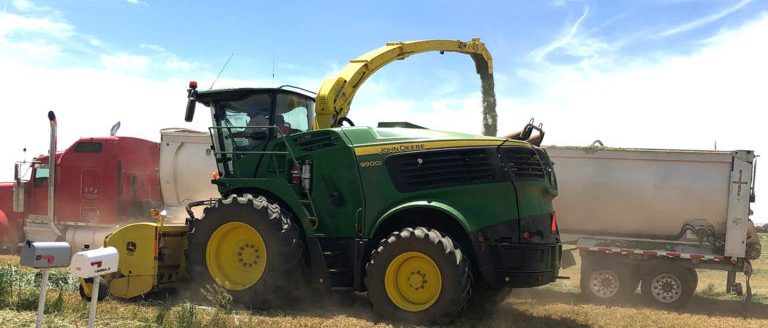Wheat harvest is upon us and that leads us to be thinking about some forage opportunities after harvest is complete. There is plenty of growing season left this year and there are several forage possibilities.
If the cropland is not irrigated, receiving some rains after wheat harvest is, of course, going to be necessary to grow that forage crop.
For example, with good moisture an early maturing corn is one possibility for silage if you plant it thick. A better dryland choice might be a high grain-producing forage sorghum, if chinch bugs and other insects are not a problem. Sunflowers can be a surprisingly good choice for a short-season silage. They survive light frost and yield well under many conditions.
If hay is preferred, plant sorghum-sudan hybrids, teff, or pearl or foxtail millet. A hay crop exceeding two to three tons per acre can be grown easily if planted soon after wheat harvest. Another hay or silage alternative is solid-seeded soybeans. A couple tons of good forage can be grown from taller, full season varieties planted after wheat.
Oats planted in late July to early August is another option. Yields over two tons are common when moisture is good, fertility is high and your hard freeze comes a little late.
Definitely consider turnips, as well as oats, for fall pasture planted into wheat stubble in late July or early August. With a few timely rains in August and September, both oats and turnips produce much high-quality feed in a short time, and they are relatively inexpensive to plant.
Don’t automatically let your wheat ground sit idle the rest of the year, especially if you could use more forage.




